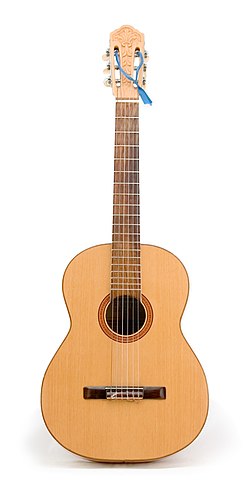
The following is a list of symbols of the U.S. state of Texas .

The following is a list of symbols of the U.S. state of Texas .
| Type | Symbol | Date designated | Image |
|---|---|---|---|
| Motto | "Friendship" | 1930 [1] [2] | |
| Nickname | "The Lone Star State" [1] | ||
| Flag | The Lone Star Flag [1] | June 30, 1839 |  |
| National seal | Seal of the Republic of Texas | January 25, 1839 |  |
| State seal | Seal of Texas | December 29, 1845 |  |
| Reverse of the seal | August 26, 1961 |  | |
| National coat of arms | Coat of arms of the Republic of Texas | January 25, 1839 |  |
| State coat of arms | Coat of arms of Texas | 1993 |  |
| National guard crest | Crest of the Texas National Guard | February 18, 1924 |  |
| Flower | Bluebonnets (Lupinus spp., namely Texas bluebonnet, L. texensis and sandy land bluebonnet L. subcarnosus ) [1] | March 1901 [3] |  |
| Tree | Pecan (Carya illinoinensis) | 1919 |  |
| Soil | Houston Black | ||
| Bird | Northern mockingbird | 1927 [1] [4] |  |
| Song | "Texas, Our Texas" [1] | 1929 | |
| Mammal (small) | Nine-banded armadillo (Dasypus novemcinctus) [1] | 1927 |  |
| Mammal (large) | Texas Longhorn [1] | 1995 |  |
| Mammal (flying) | Mexican free-tailed bat (Tadarida brasiliensis) [1] | 1995 |  |
| Dog | Blue Lacy [1] | June 18, 2005 |  |
| Horse | American Quarter Horse [1] | 2009 |  |


| Type | Symbol | Date Designated | Image |
|---|---|---|---|
| Air force | Commemorative Air Force [1] | ||
| Bread | Pan de campo [1] |  | |
| Cooking implement | Dutch oven [1] |  | |
| Dinosaur | Sauroposeidon proteles | 2009 (replaced Pleurocoelus which was state dinosaur 1997–2009) [5] |  |
| Dish | Chili [1] | 1977 |  |
| Domino game | Texas 42, [1] a four-player domino game with bidding and trumps | ||
| Fiber and fabric | Cotton | 1997 [1] [6] |  |
| Fish | Guadalupe bass [1] (Micropterus treculii) | 1989 |  |
| Flower song | Bluebonnets | 1933 [1] [7] | |
| Folk dance | Square dance | 1991 |  |
| Fruit | Texas red grapefruit | 1993 |  |
| Gem | Texas blue topaz | 1969 |  |
| Gemstone cut | Lone Star Cut [8] |  | |
| Grass | Sideoats grama (Bouteloua curtipendula) | 1971 |  |
| Handgun | Colt Walker [1] | 2021 |  |
| Insect | Monarch butterfly [1] (Danaus plexippus) | 1995 |  |
| Music | Western swing [1] | ||
| Musical instrument | Acoustic guitar [1] |  | |
| Nut | Pecan (carya illinoinensis) | 1919 |  |
| Pepper (native) | Chiltepin (Capsicum annuum var. glabriusculum) |  | |
| Pepper (other) | Jalapeño | 1995 |  |
| Plant | Prickly pear cactus (Opuntia sp.) | 1995 |  |
| Play | Fort Griffin Fandangle , The Lone Star, Texas , Beyond Sundown [1] | ||
| Reptile | Texas horned lizard [1] (Phrynosoma cornutum), commonly called the horny toad or horned frog. | 1993 |  |
| Shell | Lightning whelk (Sinistrofulgur perversum pulleyi) | 1987 |  |
| Ship | The battleship USS Texas (BB-35) [1] |  | |
| Shrub | Crape myrtle (Lagerstroemia indica) |  | |
| Shrub (native) | Texas sage (Leucophyllum frutescens) |  | |
| Slogan | "The Friendly State" [1] | 1930 | |
| Snack | Tortilla chips and salsa [1] | 1995 |  |
| Sport | Rodeo | 1997 [6] |  |
| Stone | Petrified palmwood |  | |
| Tartan | Texas Bluebonnet Tartan | May 25, 1989 |  |
| Pastry | Strudel and sopaipilla | 2003-2005 |   |
| Vegetable | Texas sweet onion [1] | 1997 |  |
A pledge of allegiance to the Texas flag was established in 1933.
Honor the Texas flag; I pledge allegiance to thee, Texas, one and indivisible. [9]
Updated on June 15, 2007 to:
Honor the Texas flag;
I pledge allegiance to thee, Texas,
one state under God,
one and indivisible. [10]

Four ships of the United States Navy and one in the Confederate States Navy have borne the name Texas: